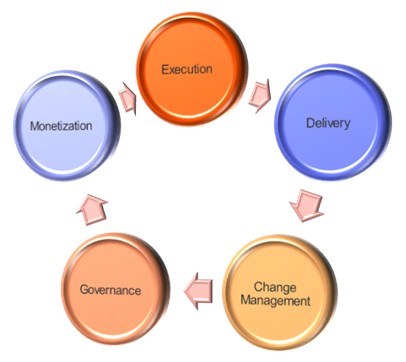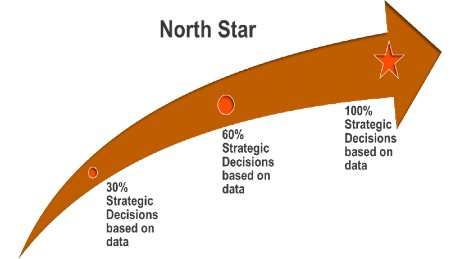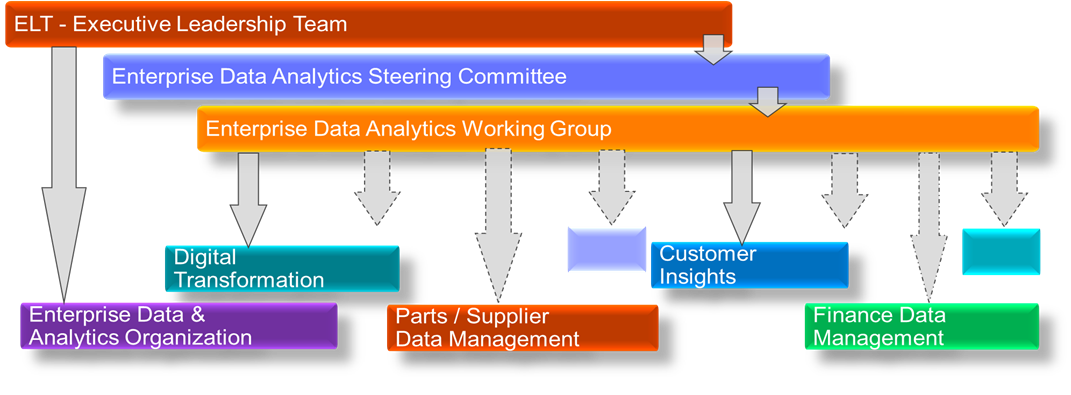Chief Data Officers: Beyond the First 100 Days – Part 1
Over the last decade, the chief data officer community has significantly moved the needle, gaining traction and acceptance in the corporate world. The role has transformed to be a senior position in the organization, with a seat on the executive board. The focus has shifted as well, from technology efficiency and compliance to data monetization. Still, the majority of CDOs are facing a typical set of challenges.
Upon completion of their first 100 days on the job, CDOs have settled into their new role, met stakeholders, and understood their critical strategic needs. They have gotten first impressions of the enterprise data and analytics technical landscape, baselined the organization’s maturity, defined the target scope at a high level, and secured funding.
Now, what is next?

Beyond the first 100 days, CDOs direct and oversee the execution of the roadmap, from a strategic level to an executable, more detailed level.
The roadmap developed during the first 100 days based on best practices can be categorized as: execution, delivery, change management, governance, and monetization at a high level. CDOs roll up their sleeves and walk the walk incrementally toward a singular focus on these areas.
While the approach towards execution may differ depending on what generation the CDO is, the steps are generally standard. CDOs are viewed as first or second generation based on their experience in leading enterprise data and analytics teams and the size of the overall organization. A second-generation CDO might be able to move through some of the fundamental steps faster than a first-generation CDO. Organizational readiness for the CDO role is another positive factor for a speedy adoption.
In this first of two posts on the CDO after the first 100 days, we will double click on the scope, priority, and operating model.
The Goal, Scope, and Priorities of a CDO
CDOs should establish a goal as a north star and plan execution and delivery to move incrementally toward the goal.
Where does the data and analytics organization need to be in the next three years?

For example, if 100% of business decisions are expected to be data-driven in the next three years, what should the goal be for the first year? 30%?
An organization’s readiness to accept change plays a role in establishing this goal.
Where do we begin?
Do the current year's priorities help achieve 30%? Should the organization strive towards 60% to 70% during the second year or go full-court press and strive for 90%? This decision depends on organizational readiness and culture.
Even after establishing the goal, many CDOs are unsure where to begin. Balancing priorities across business units and incrementally setting a minimum viable product (MVP) is a common practice.
Creating and advocating a culture that believes in “company first, team second, and self third” is crucial to creating MVP in the best interest of the organization and helps focus everyone on a common goal.
The priority depends on the organization's ability to manage risk and how the CDO can get business stakeholders to focus on enterprise data.
What is within the CDO's jurisdiction?
- Physical assets
Legacy data assets, on-premises data stores and lakes, cloud-native data infrastructure, enterprise business intelligence, reporting, advanced analytics, data science, AI/ML models, etc.
- Environments
Product, non-product, disaster recovery data, backup
- Scope
All business unit data: policy administration systems, product management systems, external data, internal data, sandbox data, and third-party data managed within the business units
There is no doubt that CDO has accountability for the entire data landscape, including related processes and consumption both internally and externally. But there are perspectives on when the CDO should assume ownership of the whole landscape. It is a roadmap based on corporate priorities, ability to manage risk, and compliance.
- What business priorities are we solving?
It is a roadmap for CDOs to take charge of all the data needs of the organization. Roadmaps need to be reviewed periodically and prioritized. During this journey, what risks can be taken and who will own them?
Who can weigh in and help the CDO establish these detail-level priorities?
You need a senior-level steering committee to provide oversight and support.
Organizational Oversight
A steering committee sponsored by the executive leadership team should be formed, with critical leaders representing functions and data domains across the enterprise. The committee will provide strategic prioritization and a funding process for the CDO to establish ongoing organizational oversight and support.
The steering committee should also:
- Mobilize a workgroup with middle management and key data subject matter experts in the business and technology area.
- Help strategically align organizational goals with data initiatives and set priorities while the workgroup articulates business value and propagates strategic priorities to project, program, and delivery teams.
- Help the CDO with the business case and ROI for funding; support and encourage execution and delivery teams; act as a champion for change culture; and continuously promote data literacy with every data citizen in the organization.

Now that we have organizational oversight, the next important step on the path to success is the operating model.
Operating Model
For the CDO, aligning the operating model with organizational culture is the key to success. Successful organizations work towards the following structure:
- Strategy & Architecture Oversight – Data architecture, information architecture, integration, and governance
- The Program, Planning, Delivery, Execution & Change Communication – Office of CDO
- Center of Excellence (CoE) – Data engineering, advanced insights, data science, AI/ML
- Keep the Lights On (Operations) – Embedded in center of excellence (CoE) functions to promote continuous improvement/continuous development (CI/CD)
Generally, the resources are aligned based on the expertise offered and promote standards in execution and consistency in delivery.
The CoE is formed differently, but it depends on the organization's culture and maturity. Two prominent CoE examples include:
- Competency – All initiatives work with the competency center for direction and delivery
- Consultative – CoE leads are embedded in programs, projects, and business functions, and they all work in concert.
With oversight by the organization and an operating model established, the CDO can now turn their focus to execution.
Program, Planning, Delivery, Execution and Change Communication (Office of CDO)
A robust execution model should include the following aspects:
- Minimum Viable Product (MVP)-focus
A robust program structure is critical to take the strategic-level enterprise data and analytics priorities and decompose them into the lowest possible user stories in the backlog.
Program staff creates self-organized agile teams or pods with expertise from business, technology, data, and analytics to groom the backlog and create a short-term roadmap and plan in the form of MVP, based on the most value for the least effort (low-hanging fruit).
The program staff should maintain a heat map that ties the roadmap with value statements.
Program staff also manage intake and run this MVP process continuously to align with the corporate priorities.
The MVP also focuses on a common goal and eliminates or consolidates siloed initiatives.
- Communication
Program management acts as a communication catalyst between the sponsoring executive leadership team, steering committee, work group, operating CoE teams, and project teams in managing status, retrospective, issues, risks, scope, priorities, success stories, and timelines.
Program management cascades feedback down from leadership teams to project teams.
If your organization is in the middle of its journey toward establishing a successful chief data office, you can think of the first 100 days as the trailer for a featured presentation, “Reaching the North Star.”
The key areas covered—scope, priorities, and operating model—help the organization lay the foundation with guardrails. These include leadership oversight, an operating model, budget management, resource management, communication, and change management, which are of paramount importance for the success of the CDO.
Please stay tuned for the next installment of my series, “Beyond the first 100 Days of a CDO,” which will focus on data strategy, governance, data monetization, and democratization.








